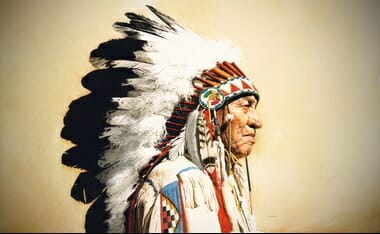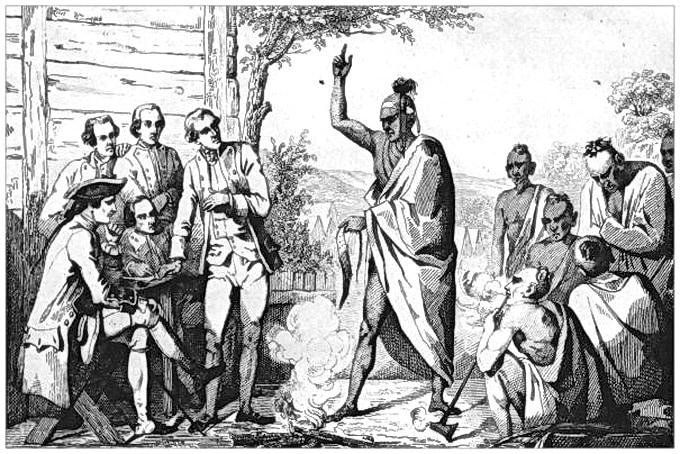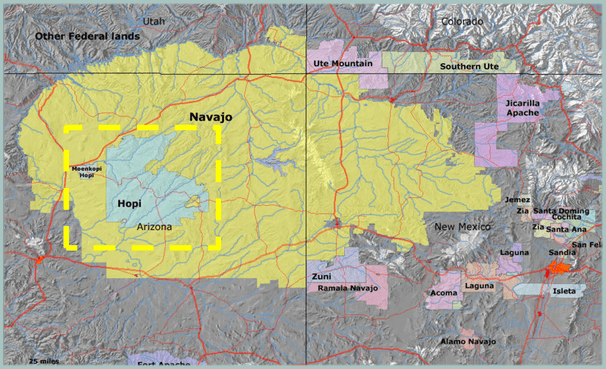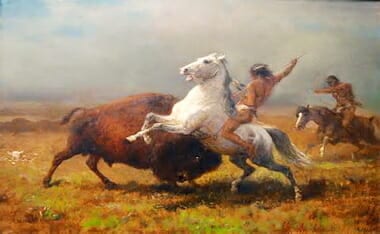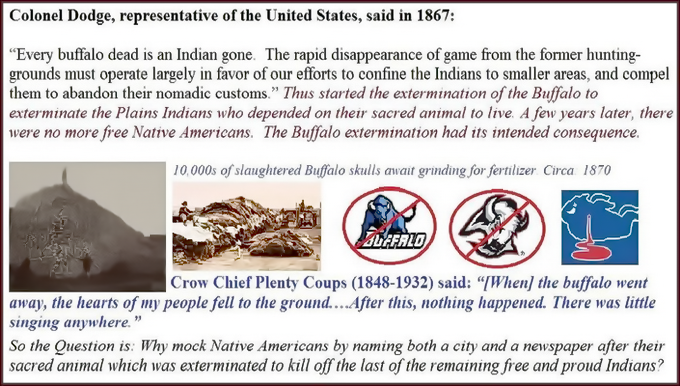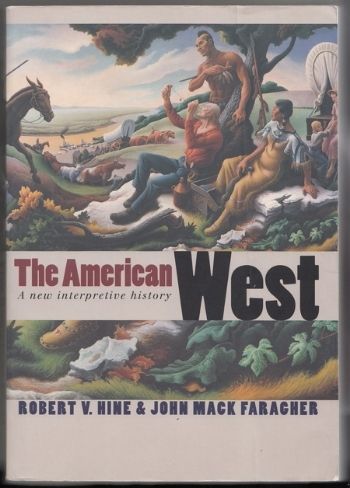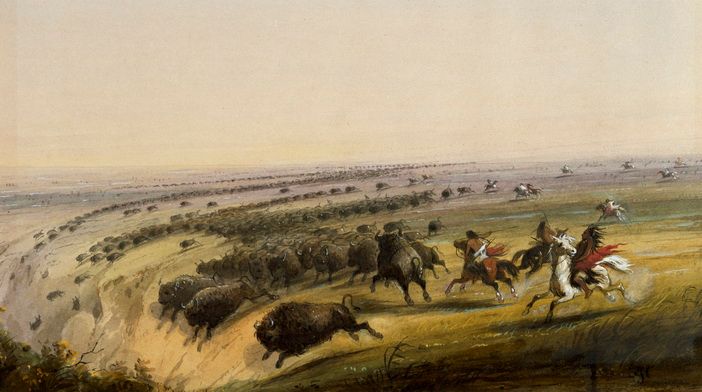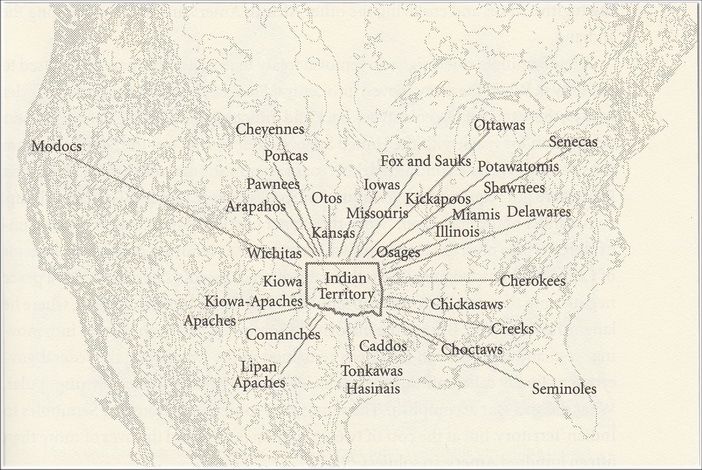Indians vs. Settlers – Letter from a Concerned Parent
An in-class (6th-grade) supplement from the desk of SeanG
(Updated 6/2023 and 11/2015 | Published here 7/2010 | Originally published 4/2007 | Letter written to school in 2004)
First and foremost, the reason behind this paper is not, let me repeat, is not to incite parents to call the school and complain about what our kid’s are being taught. We must keep in mind that the teachers only teach what they are told to teach. The purpose of this paper is meant as a supplement for those who wish to deepen their conversation of history with their son or daughter that reveals both sides of the historical coin.[1] I do not wish this paper to be viewed as an apologetic[2] for the atrocities that some in the name of religion or greed inflicted on the New World. We hear of these all the time, however, this truth can be twisted and misrepresented in a way that is a tool for special interest groups as well as being a means towards a political goal, which, in California, is par for the course.
I was somewhat troubled when I was going over my child’s in class social studies notes and homework. His notes were gleaned from an in class video[3] and discussion (the social studies book[4] does a decent job at staying neutral on the subject, so this critique deals primarily with the in class discussion and video). Below (fig. 1) is an exact reproduction of my son’s notes (cannot reproduce for this posting).

At first glance, to some, this may sound standard, and some may even believe that the European man was this horrible, and that the Native-American is angelic and at “one with nature.” This assumption that one is indoctrinated with needs a critical look however. And afterwords, you, the parent, can decide what is relevant to discuss with your kids, as I have done.
The first two columns on the Native-American and Explorers side will take some time to deal with. The Native-American certainly did believe that the land was a gift from their Creator[5]; however, the litany of tribal elders in the video speaking of the land as not being “owned” is merely semantics. Most tribes did – I repeat – did fight for territorial rights and hunting grounds. Some tribes, after depleting an area of its natural resources[6] (dealt with more in-depth later) would pack up and move, only to battle for more resources elsewhere. They may not have set up picket fences, but they sure did act as if this land was theirs. The video also portrayed contradictory statements by the elders of the various tribes, in one quote it was said that the Native-American did not own the land, and in another, we are told that the Comanche owned 600 million acres.
This comparison of the Native-Americans respecting nature so much that they thought it immoral to “own land,” (column #2) compared with the column to its right mentioning that the explorers “own[ed] humans,” is another play on words. Not only a play on words, but devoid of important information that could balance the times in which these two peoples tried to co-exist. The video makes it seem like slavery was the invention of the European settler, and only he was vile enough to practice such. The video showcased Native-Americans expressing their distaste for the white-man[7] in a virulent manner. For example (and bear in mind this quote – directly from the video – can be applied to this entire thesis):
“The white-man has always had the philosophy that they are thee dominant race. That it is their manifest destiny to take over the world, so to speak. Indians did not accept this idea. They were here as stewards of the land. They were here to take care of it while they were here, but they never owned it.”[8] (Emphasis added)
The video is conveniently silent on the matter of Native-Americans owning slaves, and not only that, but treating them horribly (e.g., separating other Native-American couples and forcefully taking the women as wives [rape], murder, etc). Choctaws, Chicasaws, Cherokee, Creeks and Seminoles[9] are just a few examples of tribes that owned slaves. To be fair, the social studies book did mention that the Aztecs, at least, owned slaves (p. 67).
There were, to be sure, peaceful tribes in the pre-Columbian America, like the Hopis of the Southwest and the Slaves (not to be confused with slaves) of sub-artic Canada. Most Native-American tribes, however, were familiar, long before Columbus, with the kinds of wickedness that had beclouded European (and the Asian and African continents) history for centuries: aggression, warfare, torture, persecution, bigotry, slavery, and tyranny,[10] just to name a few. This isn’t pointing fingers; it is merely a comment on the nature of man. Historian Arthur Schlesinger, Jr., comments,
“Cruelty and destruction are not the monopoly of any single continent or race or culture.”[11]
Not only did they own slaves prior to the European settlers coming to the New World, when West Africans were introduced to the Americas, the Native-Americans even took (acquired in raids, trading, or simply bought) them as slaves. Yes, you heard me; Native-Americans owned other Indians and Blacks as slaves, even some Whites after raids. The Seminoles were somewhat tolerant, and in the nineteenth century an Afro-Indian community, via intermarriage, in the state of Florida was generated (a gorgeous mix by the way, Seminole/African-American).
KEY: So we see that the Native-Americans, contrary to my child’s in-class video, did believe in “owning” people… pre-Columbus and post-Columbus. (Native Americans had enslaved each other for millennia!)
…when the Europeans took over the American West just in time to save the Hopi Indians from genocide at the hands of the Navajo (a fact that explains why maps of Arizona show the Hopi reservation as a tiny dot in the middle of the vast Navajo reservation).
Wilfred Reilly, Hate Crime Hoax: How the Left is Selling a Fake Race War (Washington, D.C.: Regnery Publishing, 2019), 35.
warfare that was common to kinship-based societies. Pueblo warfare was not, however, limited to blood feuds. Living in and near the densely populated but resource-poor Rio Grande valley, Pueblo tribes such as the Hopis, Zunis, Piros, and Tewas fought with one another to secure control of the region’s limited supply of arable land. Such economically and territorially motivated warfare led the Pueblo Indians to make their adobe towns—called pueblos—powerful defensive fortifications. They did so by building their settlements atop steep mesas, by constructing their multistory buildings around a central plaza to form sheer exterior walls, and by limiting access to the main square to a single, narrow, easily defended passageway. Navajo and Apache raiding parties consequently found the Pueblo Indians’ settlements to be tempting but formidable targets.
The significance of warfare varied tremendously among the hundreds of pre‐Columbian Native American societies, and its meanings and implications changed dramatically for all of them after European contact. Among the more densely populated Eastern Woodland cultures, warfare often served as a means of coping with grief and depopulation. Such conflict, commonly known as a “mourning war,” usually began at the behest of women who had lost a son or husband and desired the group’s male warriors to capture individuals from other groups who could replace those they had lost. Captives might help maintain a stable population or appease the grief of bereaved relatives: if the women of the tribe so demanded, captives would be ritually tortured, sometimes to death if the captive was deemed unfit for adoption into the tribe. Because the aim in warfare was to acquire captives, quick raids, as opposed to pitched battles, predominated. Warfare in Eastern Woodland cultures also allowed young males to acquire prestige or status through the demonstration of martial skill and courage. Conflicts among these groups thus stemmed as much from internal social reasons as from external relations with neighbors. Territory and commerce provided little impetus to fight.
[….]
On the Western Plains, pre‐Columbian warfare—before the introduction of horses and guns—pitted tribes against one another for control of territory and its resources, as well as for captives and honor. Indian forces marched on foot to attack rival tribes who sometimes resided in palisaded villages. Before the arrival of the horse and gun, battles could last days, and casualties could number in the hundreds; thereafter, both Plains Indian culture and the character and meaning of war changed dramatically. The horse facilitated quick, long‐distance raids to acquire goods. Warfare became more individualistic and less bloody: an opportunity for adolescent males to acquire prestige through demonstrations of courage. It became more honorable for a warrior to touch his enemy (to count “coup”) or steal his horse than to kill him.
Although the arrival of the horse may have moderated Plains warfare, its stakes remained high. Bands of Lakota Sioux moved westward from the Eastern Woodlands and waged war against Plains residents to secure access to buffalo for subsistence and trade with Euro‐Americans. Lakota Sioux populations, unlike most Indian groups, increased in the eighteenth and early nineteenth centuries; this expansion required greater access to buffalo and thus more territory.
The column under that (#3a, and b) deals specifically with the Christian faith. Now, mind you, the video did mention that the explorers committed horrible acts against the Aztecs only after witnessing their ghastly sacrifices of other people (it didn’t mention that this included babies). After this the European explorers went about destroying those who wouldn’t become Christians – that is, rejecting their horrible religion that included human/baby sacrifice.
Although the video mentioned this in passing, it made the explorers seem worse than they were.[12] I am all for discussing the blight of Western-man and his religion, but in all fairness, this should slice both ways. From what I can tell from my child’s notes, and after viewing the video for myself, the in-class work chose “to focus on the Native Americans as the ‘victims’ because they lost their lives and culture as a result of European progress. In doing so… [it]… completely ignores a large portion of history in which both Native Americans and Europeans ‘matched atrocity for atrocity’.”[13] This is an important distinction that was made in my sons fifth-grade class, that is: a moral position was chosen and advanced, rather than history being taught as just that, history.
The last blurb in the “Explorers” side of the column (row 4, side b) reflects as well the videos hatred for the European settler, and again, the video is very sure in its quoting Native-Americans who are vehemently “anti-white-man.” We want to take over the world still, or so the video seems to say. What can you do? The last column (Row 5, side a) on the “Native-American” side mentions, “They were stewards of the land.” This is another long one, and mind you, I will list some web sites to visit for some short commentary as well.
This is similar to an old VHS video my son’s 5th grade class watched regarding American Indian and Settler relations. This video excerpt is from the video “American History for Children Video Series: Native American Life,” Narrated by Irene Bedard (Schlessinger Video Productions, 1996). Like I said, I viewed a similar VHS tape when I checked out the video in 2004 from my son’s elementary school.
We, of course, have all heard of the Native-Americans using every part of the buffalo, not wasting, caring for Mother Nature and the like. However, the whole story is conveniently left out.[14] The entire buffalo was only used in times of want. In times of plenty, some tribes would run entire herds of buffalo off of cliffs, killing hundreds to thousands at a time just for their tongues. Some tribes would burn entire forests killing many species and sometimes, entire herds of buffalo. A commentary[15] does well to expand on this theme:
From James Fenimore Cooper to Dances with Wolves and Disney’s Pocahontas, American Indians have been mythologized as noble beings with a “spiritual, sacred attitude towards land and animals, not a practical utilitarian one.”[16] Small children are taught that the Plains Indians never wasted any part of the buffalo. They grow up certain that the Indians lived as one with nature, and that white European settlers were the rapists who destroyed it.
In The Ecological Indian: Myth and History, Shepard Krech III, an anthropologist at Brown University, strips away the myth to show that American Indians behaved pretty much like everyone else. When times were bad they used the whole buffalo. When times were good, “whole herds” of buffalo might be killed only for their tongues or their fetuses.[17] Although American Indians adapted to their environment and were intimately familiar with it, they had no qualms about shaping it to their needs.
Indians set fires to promote the growth of grasses and make land more productive for the game and plants that they preferred. Sometimes fire was used carefully. Sometimes it was not. Along with the evidence that Indians used fire to improve habitat are abundant descriptions of carelessly started fires that destroyed all plant life and entire buffalo herds.[18]
Nor were American Indians particularly interested in conserving resources for the future. In the East, they practiced slash and burn agriculture. When soils became infertile, wood for fuel was exhausted, and game depleted, whole villages moved.[19] The Cherokee, along with the other Indians who participated in the Southern deerskin trade, helped decimate white-tailed deer populations.[20]Cherokee mythology believed that deer that were killed in a hunt were reanimated.
In all, contemporary accounts suggest that many Indians treated game as an inexhaustible resource. Despite vague hints in the historical records that some Crees may have tried to conserve beaver populations by allocating hunting territories and sparing young animals, Krech concludes that it was “market forces in combination with the Hudchild’s Bay Company policies [which actively promoted conservation]” that “led to the eventual recovery of beaver populations.”[21]
Those who blame European settlers for genocide because they introduced microbes that ravaged native populations might as well call the Mongols genocidal for creating the plague reservoirs that led to the Black Death in Europe.[22] Microbes travel with their hosts. Trade, desired by Indians as well as whites, created the pathways for disease.
Another interesting item that came up in the video was that of the “white man” bringing his diseases, as mentioned above and in the video. However, little is ever said about the normal lifespan of the Native-American, which was around 35 at the time due to the already present poor health, disease, dysentery and hygiene, or, lack thereof. The photo’s we have all seen of the Native-Americans during Civil War times are older mainly due to the introduction of medicine and hygiene by the European settler. New information in a paper written by Richard Steckel, a professor of economics and anthropology at Ohio State University, and published in the journal Science, has shown that the health of the Native-American was in drastic decline prior to the settler coming to the New World.[23]
Footnotes
[1] There is some adult material herein (e.g., descriptions of violence and the like), so edit accordingly.
[2] apologetic: “defending by speech or writing.” (Definition #2) Random House Webster’s Unabridged Dictionary, CD-ROM (1999).
[3] Schlessinger Video Productions, Indians of North America, Video Collection II; Bala Cynwyd: PA (1995); in the school library.
[4] A New Nation: Adventures in Time and Place, National Geographic Society/McGraw Hill Pub; New York: NY (2000)
[5] The video was very religiously entwined; I only wish that such positive representations of other faiths were allowed equal time in the classroom. Say, like, Christianity.
[6] e.g., game (animals), wood, healthy top-soil, ran species into extinction (like certain sea turtles and the like), etc.
[7] The distasteful manner in which the video represents and uses the term “white-man” (a quote) is quite inappropriate.
[8] Veronica Valarde Tiller – a Jicarilla Apapche. Quote from the in-class video.
[9] Dinesh D’ Souza, The End of Racism, The Free Press; New York: N.Y. (1995), p. 75.
[10] Paul F. Boller, Jr., Not So! Popular Myths About America from Columbus to Clinton, Oxford Univ. Press; New York: NY (1995), p. 7. (This book is a fun, interestingly invigorating read! I highly recommend it)
[11] Ibid., p. 12. Quoted from: Arthur M. Schlesinger, Jr., “Was America a Mistake?,”Atlantic Monthly (September 1992), p. 22.
[12] This is a side note for those who are of the Christian faith:
The Bible does not teach the horrible practices that some have committed in its name. It is true that it’s possible that religion can produce evil, and generally when we look closer at the details it produces evil because the individual people [“Christians”] are actually living in rejection of the tenets of Christianity and a rejection of the God that they are supposed to be following. So it [religion] can produce evil, but the historical fact is that outright rejection of God and institutionalizing of atheism (non-religious practices) actually does produce evil on incredible levels. We’re talking about tens of millions of people as a result of the rejection of God. For example: the Inquisitions, Crusades, Salem Witch Trials killed about 40,000 persons combined (World Book Encyclopedia and Encyclopedia Americana). A blight on Christianity? Certainty. Something wrong? Dismally wrong. A tragedy? Of course. Millions and millions of people killed? No. The numbers are tragic, but pale in comparison to the statistics of what non-religious criminals have committed); the Chinese regime of Mao Tse Tung, 60 million [+] dead (1945-1965), Stalin and Khrushchev, 66 million dead (USSR 1917-1959), Khmer Rouge (Cambodia 1975-1979) and Pol Pot, one-third of the populations dead, etc, etc. The difference here is that these non-God movements are merely living out their worldview, the struggle for power, survival of the fittest and all that, no natural law is being violated in other words (as atheists reduce everything to natural law – materialism). However, when people have misused the Christian religion for personal gain, they are in direct violation to what Christ taught, as well as Natural Law.
[13] “Shades of Truth,” by Jeff Bricker, found at: http://parallel.park.uga.edu/~tengles/102m/bricker.html (I highly recommend this paper as it will add to the reasons and logic behind the different historical “takes” on this issue. UPDATE: (these links are since gone) I was contacted by the author who has become more left-leaning in his later days and he asked me to remove this portion as he has excised all his previous works. I refused on the grounds that he must prove to me that what he said is untrue, after which I would remove his older work. “A True Story,” by Katie Patel, found at: http://parallel.park.uga.edu/~tengles/102m/pa##l.html (another high recommend.) UPDATE: Another dead end – keep in mind when I wrote this my oldest son was in sixth-grade. He is now a Marine.
- You should see: http://reason.com/archives/2010/02/03/the-peoples-historian
[14] “The Ecological Indian: Myth and History,” by Terry L. Anderson, from the Detroit News, reviewing a book of the same name by Shepard Krech III, October 4, 1999. Can be found at:
[15] Buffaloed: The Myth and Reality of Bison in America (12-01-2002) by Larry Schweikart:
[16] Shepard Krech III, The Ecological Indian: Myth and History, W.W. Norton & Company; New York: NY (1999), p. 22.
[17] Ibid., p. 135.
[18] Ibid., p. 119.
[19] Ibid., p. 76.
[20] Ibid., p. 171.
[21] Ibid., p. 188.
[22] For a discussion of the effect of the Mongol invasions and their effect on European epidemiology see, William H. McNeill, Plagues and Peoples, Doubleday; New York: NY (1977).
[23] “Health Of American Indians On Decline Before Columbus Arrived In New World,” This study involved 12,500 Indian skeletal remains from 65 different sites. Can be found at:
CHALLENGING THE “GENOCIDE” CHARGE
…and, THE “STOLEN LAND” CHARGE
Are Americans living on stolen land acquired by nefarious means? Jeff Fynn-Paul, professor of economic and social history at Leiden University and author of Not Stolen: The Truth About European Colonialism in the New World, dispels this misleading and destructive myth.
